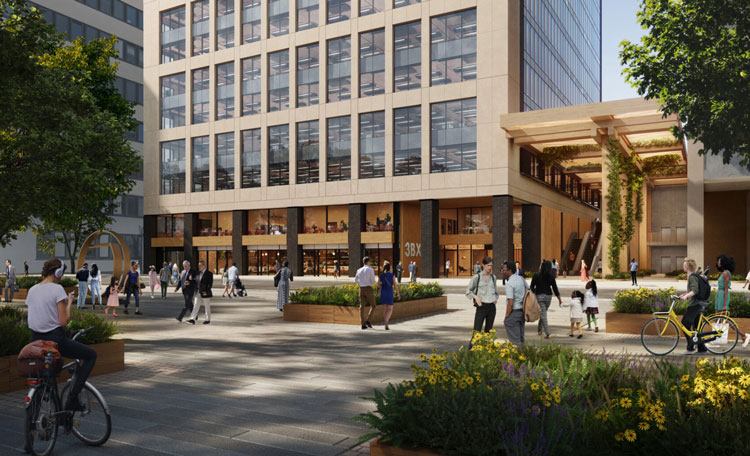- Total of 12.6 million sq m leases across Europe, 15% growth on 2021
- Leasing activity remains well above the fifteen-year average of 10.3 million sq m
- Net absorption positive across all quarters in 2022 and above ten-year average
- Vacancy stabilised at 8.1%, below long run trend as completions and construction activity shows modest fall
London, 13 February 2023 – Market analysis from real estate services firm Cushman & Wakefield shows that Europe’s office leasing markets are in rude health as they reap the benefits of markets fully reopening from Covid-related restrictions. A total of 12.6 million sq m of office space was leased in 2022, a 15% jump on the 10.9 million sq m leased in 2021, and sits well above the fifteen-year average of 10.3 million sq m.
The growth in activity was evident across the majority of markets with 23 out of 30 markets tracked reporting year-on-year growth in leasing activity. Major markets including Milan (+37%), Warsaw (+34%), Madrid (+32%), Paris (+26%) and London (+22%) all showed robust levels of activity.
Nigel Almond, Head of Data Analytics at Cushman & Wakefield, said: “As occupancy levels pick-up, occupiers are focussed on taking the best-in-class space in the most desirable locations to attract and retain staff and ensure they have the right space to enable more flexible ways of working as well as ensuring there is the right space for collaboration, staff wellbeing and connectivity. With a growing number of countries now demanding tighter environmental standards, occupiers are focussed on securing space in buildings that meet the highest standards.”
The drive for good quality space has helped drive rental increases on prime offices, which rose by 6.2% year-on-year in Q4 2022 compared with just 1.7% in Q4 2021. This was the strongest annualised reading since mid-2008.
Almond added: “The demand for new space has not been at the expense of downsizing. Across the markets tracked net absorption levels was positive across Europe in every quarter in 2022, having been largely negative since mid-2020. Quarterly absorption averaged over 643,000 sq m in 2022, well above the ten-year average of 530,000 sq m.”
The total amount of space available for occupation across Europe showed a modest 0.7% increase year-on-year to 22.6 million sq m. Equivalent to 8.1% of total stock. This ratio has been stable at this level over the previous four quarters.
Luxembourg has the lowest ratio of available space to stock at 4.2% with three German markets – Hamburg (4.4%), Berlin (4.7%) and Munich (5.2%) – in the lowest five markets, with Paris fifth at 5.5%. Many cities are benefiting from stronger levels of take-up and limited construction activity, which is helping to keep the amount of available space at relatively low levels.
Whilst the market is not immune to broader economic headwinds, over recent quarters we have seen completion levels start to fall and the level of construction activity fall too. A total of 4.3 million sq m of new space was completed in 2022, down from 4.8 million sq m in 2021. The amount of space under construction totalled 15.2 million sq m at the end of 2022, down from 15.6 million sq m in Q4 2021. This is equivalent to 5.4% of stock. The lowest rate since 2017 and will help insulate the market from what is expected to be a more challenging environment in 2023.




